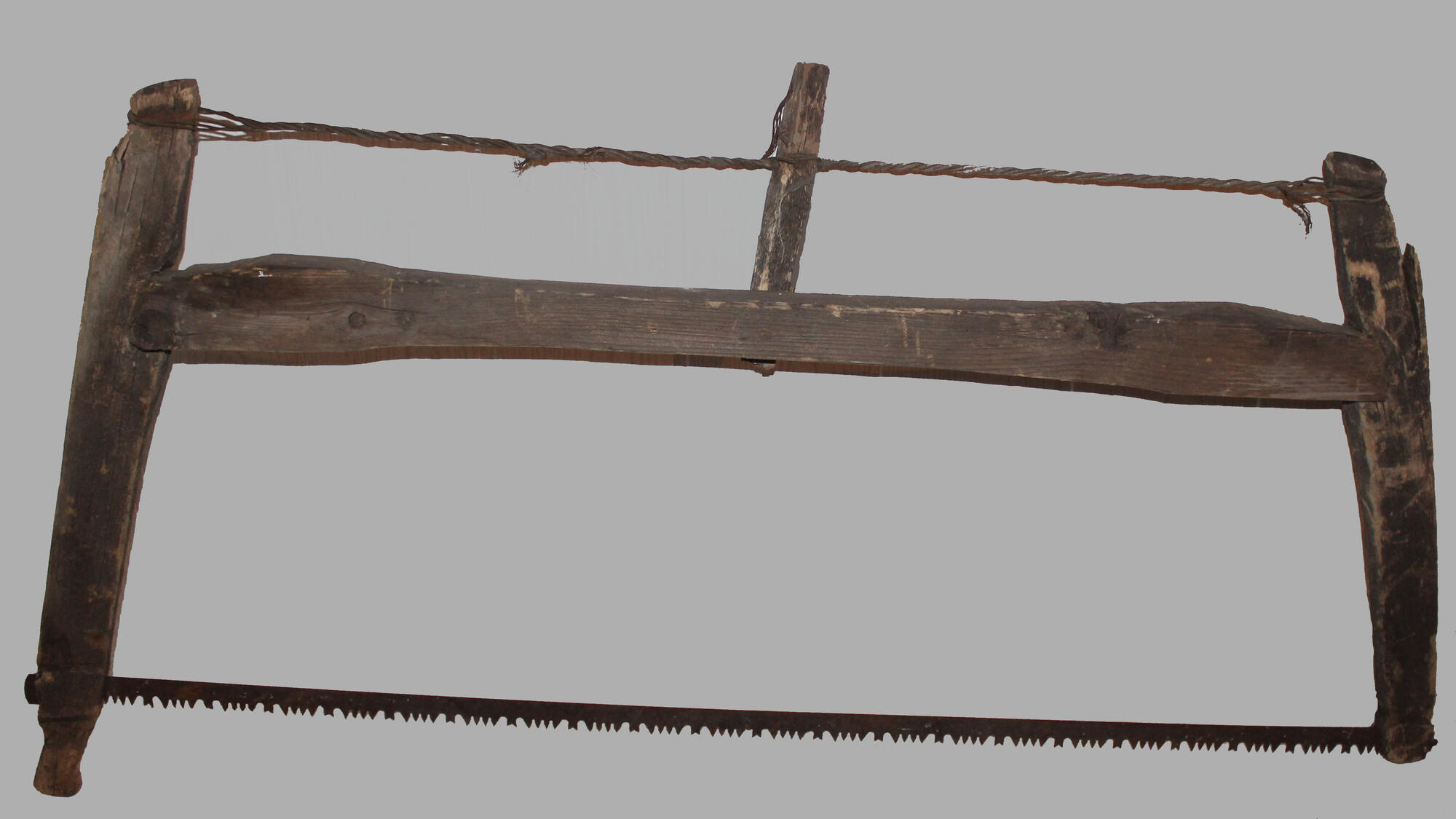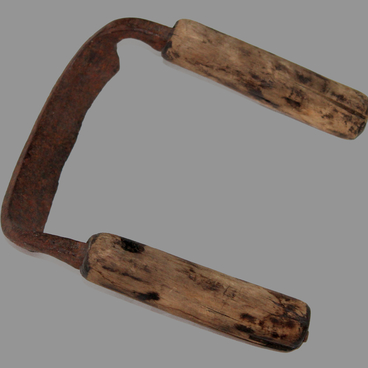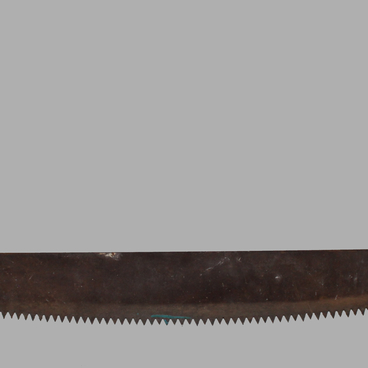Workers from the village of Ishimbaevo would often make use of bow saws when building oil field facilities in the 1930s. One such tool is contained in the collection of the IshimbAy Museum of History and Local Lore. The bow saw is an ancient tool that has been employed by numerous generations of carpenters. It has an original and simple design: the tool’s sharpened metal blade is attached to the frame in a way that leaves a gap between them. An experienced carpenter can use this tool for a long period of time without getting tired.
The frame of this type of saw is called the bow, hence the tool’s name. It is also as flexible as that of an actual war bow. The frame consists of three pieces, two of which, known as the ‘cheeks’, are attached to each of the blade’s ends, while the remaining piece, the crossbar, is secured horizontally. These elements are most commonly made of hardwood. Towards the bottom, the cheeks have holes for connecting the handles. The saw blade is fastened to the cheeks with special pins, while the cheeks themselves are inserted into grooves in the crossbar. The ends of the cheeks are pulled together with a cord. The handles of the bow saw are round in shape and their rear ends have notches and holes for securing the saw blade.
For a blade, bow saws often have just a thin strip of tool steel with teeth, which can come in a variety of sizes. The wider the blade, the lower the handleability of the entire saw; however, wider blades also have less tension in the fasteners. Any bow saw has a bowstring-like cord, which makes it even more similar to the ranged weapon that has been known since ancient times. However, the cord’s purpose is an absolutely peaceful one: it is necessary for ensuring that the blade is kept in strong and steady enough tension by the tool’s handles. Usually, such cords are made of natural materials, such as linen rope or hemp twine, as synthetic materials are much less suitable for this role. They do not have sufficient flexibility and durability for cutting massive pieces of timber.
The cross bar and the cord are connected at the center with an auxiliary bar, the toggle. The carpenter can rotate this piece to regulate the cord’s tension, firmly tightening the saw blade between the handles. Threaded handle fasteners and robust design make this type of saw ideal for both short and long cuts, as well as for sawing wood both along and across the grain. The bow saw can cut through hard knots and is suitable for radial and curve sawing.
The frame of this type of saw is called the bow, hence the tool’s name. It is also as flexible as that of an actual war bow. The frame consists of three pieces, two of which, known as the ‘cheeks’, are attached to each of the blade’s ends, while the remaining piece, the crossbar, is secured horizontally. These elements are most commonly made of hardwood. Towards the bottom, the cheeks have holes for connecting the handles. The saw blade is fastened to the cheeks with special pins, while the cheeks themselves are inserted into grooves in the crossbar. The ends of the cheeks are pulled together with a cord. The handles of the bow saw are round in shape and their rear ends have notches and holes for securing the saw blade.
For a blade, bow saws often have just a thin strip of tool steel with teeth, which can come in a variety of sizes. The wider the blade, the lower the handleability of the entire saw; however, wider blades also have less tension in the fasteners. Any bow saw has a bowstring-like cord, which makes it even more similar to the ranged weapon that has been known since ancient times. However, the cord’s purpose is an absolutely peaceful one: it is necessary for ensuring that the blade is kept in strong and steady enough tension by the tool’s handles. Usually, such cords are made of natural materials, such as linen rope or hemp twine, as synthetic materials are much less suitable for this role. They do not have sufficient flexibility and durability for cutting massive pieces of timber.
The cross bar and the cord are connected at the center with an auxiliary bar, the toggle. The carpenter can rotate this piece to regulate the cord’s tension, firmly tightening the saw blade between the handles. Threaded handle fasteners and robust design make this type of saw ideal for both short and long cuts, as well as for sawing wood both along and across the grain. The bow saw can cut through hard knots and is suitable for radial and curve sawing.



